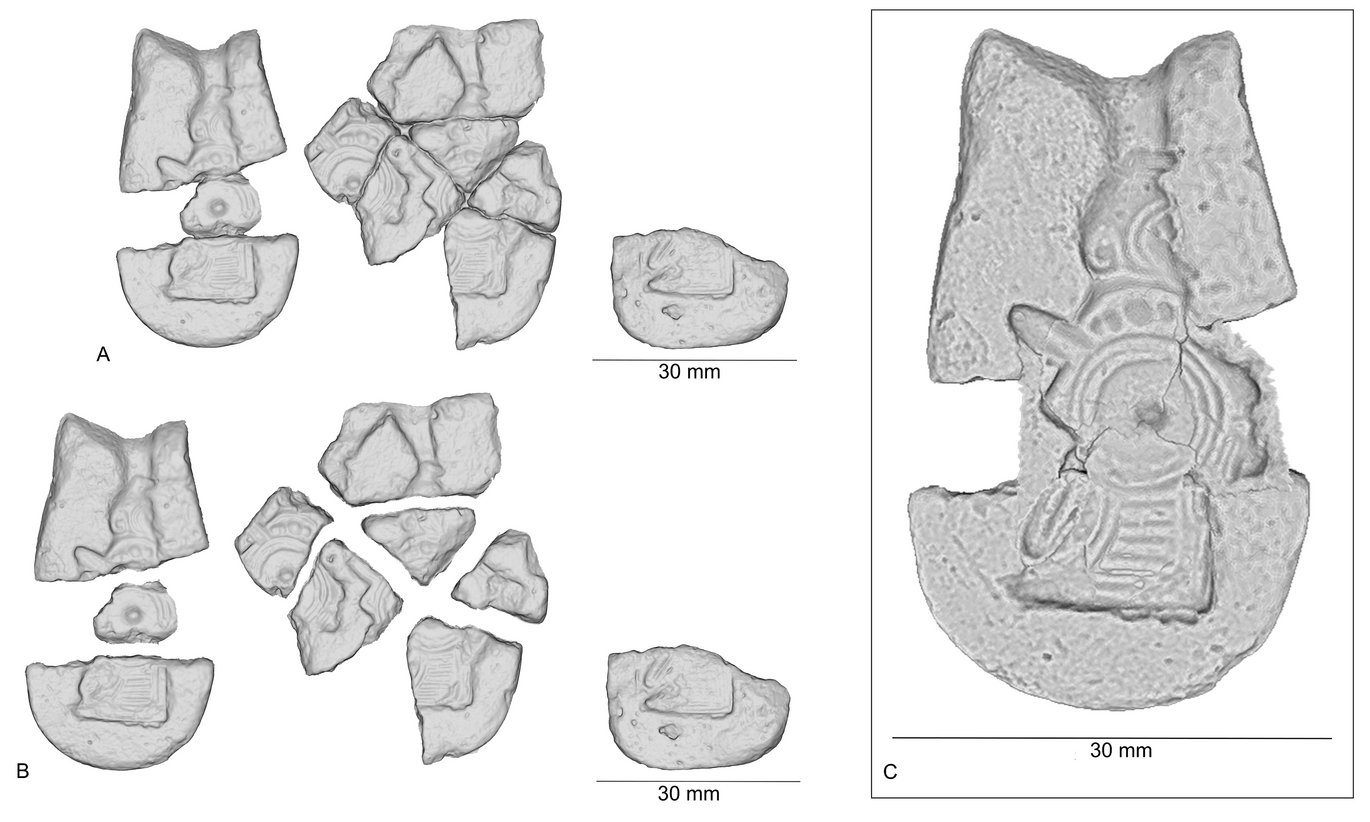Aux armes! A female warrior emerges from the dentistry lab
The Northern Emporium project has virtually reconstructed an armed female figure from casting-mould fragments found at the Viking-Age emporium Ribe. Assistant professor Sarah Croix explains the technical steps of the process and the team's thoughts on the figure's significance.

By Assistant professor Sarah Croix
Nothing says "Viking" like a fully armed, male figure. The discussion whether such associations should also be made with female individuals, who lived in Scandinavia in the Viking Age, has recently caused major stirs among the research community, with echoes spreading widely throughout society and popular culture. At the core of the debate are the finds, some of which have been known for a very long time, of burials containing the skeletal remains of biologically sexed female individuals, next to whom weapons had been deposited. Questions as to whether such finds indicate that these individuals were actually warriors – a reservation also applicable to male and children's graves with weapons – prompts further evaluation of other examples and situations, where female figures and weapons are associated.
Among the thousands of artefacts unearthed during the Northern Emporium excavation in Ribe (2017–2018), casting-mould fragments bearing the negative impression of cast objects provide unique information on Viking-Age material culture. They reveal the context and techniques of production of artefacts (ornaments, keys) found in burials all over Scandinavia and the Viking world and provide insights into distribution networks. Sometimes, they even hint at the existence of objects which have never been found before.
Some of these casting mould fragments could be identified visually as belonging to a group of pendants depicting a female individual, traditionally qualified as a "valkyrie"– linking the figure’s posture to the famous beings of the Old Norse literary tradition. Our conservator could refit some of the fragments, thus creating three moulds, but due to damage and partial preservation, none of them showed the complete figure. Our best option was thus a digital 3D reconstruction.
Thanks to the kind help of Dirk Leonardt, School of Dentistry at Aarhus University, we have been able to produce 3D models of all fragments bearing impressions of the "valkyrie" figure, using a high-speed blue-LED scanner. The instrument, designed to produce models of teeth, jaws and dental prosthetics, offered the degree of precision, speed, scaling and geometric accuracy that was required in order to realign the fragments and reconstruct the image. The best preserved parts of all fragments were virtually "glued" together, thus producing a figure which had not been seen for over a thousand years.
After enhancing the image, we were able to further analyse its details and fully appreciate the quality of the design. The figure wears a long dress, under which one can see two small feet wearing shoes. At the neck, the figure wears a row of beads or, more likely, a so-called "button-on-bow" brooch. The ornaments, and the style of the dress, are typically associated with female individuals in Viking-Age iconography. Strikingly, it is also equipped with a helmet, a shield and a sword, which is oddly placed between the body of the figure and the shield. The use of weapons is commonly associated with male individuals in Viking-Age poetry, but the posture we see here seems ill fitted for engaging in actual combat. The figure thus seems to transgress conventional gender norms. Does it depict a mythological being? Or does this show an actual person or an actual social role, adding to current debates about the existence of female warriors in the Viking Age? If so, when and how could such transgressions take place?
More clues are to be found in other moulds for figurative pendants found at the Northern Emporium excavation. The full set of moulds, their context and their significance are the subject of another paper by the team, to be discussed in due course.
To be continued …
